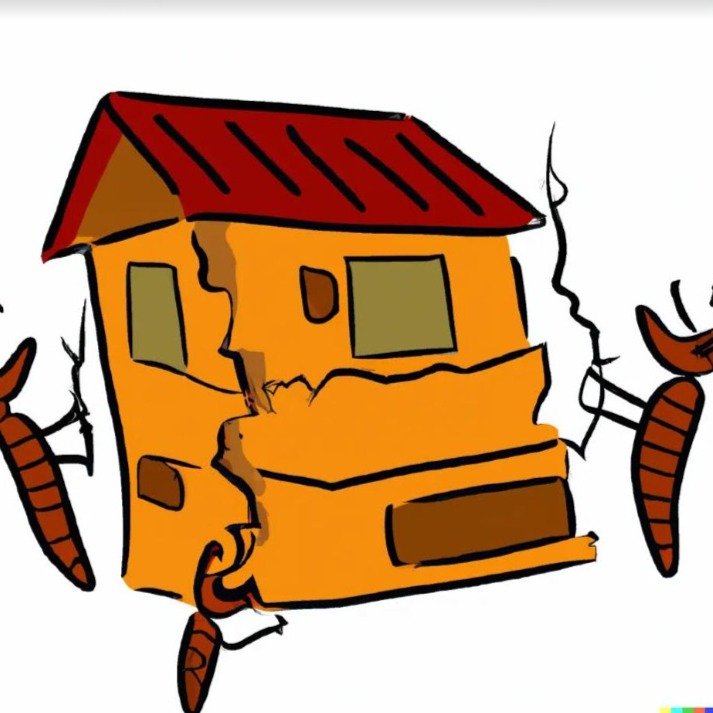How to sell a house with termite damage
If you are trying to market your home, then a termite problem could make it harder to find potential buyers. Selling a house with termite damage is possible. We will give you some of your different choices when it comes to finding buyers for your home.
What are termites?
Termites are destructive pests that chew through wood and leave unsightly holes in floors and walls. They can cause billions of dollars in property damage each year. And in some areas, they can survive for decades without eating.
What causes termites?
Termites are insects that feed off dead plant material. Some types of termites cause damage to homes and buildings. Other types do not. If you suspect termite infestation, contact a professional pest control expert.
If you live in San Tan Valley or its nearby areas, there are plenty of options to choose from. Look for the San Tan Valley pest control companies that can go the extra mile to ensure your home is safe from termite damage. In most cases, the presence of termites is not immediately noticeable until damage becomes extensive, so prevention and early detection are key.
What are some signs you might have termites in your home?
Termites are one of the most destructive pests around. They eat wood and destroy it quickly. If left unchecked, termites can cause serious structural damage to homes and businesses. Fortunately, there are several things you can do to determine whether or not you have termites in your property.
The first thing to check is your roof. Is it leaking? Are there cracks in the tiles? These are both telltale signs of termite activity. You can also look at the foundation of your home. Look for holes near windows and doors. Also, take note of how much dirt and debris is accumulating outside. This could indicate that termites are present.
If you notice any of these symptoms, contact a pest control professional immediately.
Termites are often referred to as "silent destroyers" because they can cause so much damage to a home without being detected.
How to Find Out If You Have Termites
There are three main ways you can find out if you have termites: visual evidence, shelters tubes, and damage to your home.
Visual Evidence
Termite activity is usually visible. For example, you might notice holes in your deck or fence, or sawdust around the foundation of your house. These are signs that there is termite activity in your structure.
Shelter Tubes
If you see what looks like white tubes in the ground near your house, it could mean that you have termites. Shelter tubes are used by termites to protect themselves from predators and extreme weather conditions. They look like small white tubes because of the way they’re covered in a thin layer of soil.
Damage to Your Home
You can also tell if you have termites based on how much damage they’ve caused to your home. Look closely at the exterior of your home. Are there cracks in the siding? Is paint peeling off? Do you notice wood rotting? All of these things indicate that you have termites in your home.
Repairing the Damage
Moisture problems can lead to wood rot and mold growth, causing major structural damage. If you notice water stains or wet floors, call a professional immediately. Mold can also grow in damp conditions, making it difficult to clean up.
Wood rot and mold can destroy homes if left untreated. Take steps now to prevent future moisture damage. Clean up any leaks around windows, doors and siding. Check your roof and gutters for signs of leakage. Seal cracks around pipes and drains. Fix leaky faucets and toilets.
If you see moisture damage, contact a licensed contractor as soon as possible. Repairs may cost thousands of dollars. You may also want to consider buying a house warranty.
According to the National Pest Management Association, termites cause over $5 billion in damage to homes in the United States every year.
Selling a House With Termites: Your Options
There are three main ways to go about selling a home with termite damage. Depending on what you want out of the process, each option has its pros and cons, and you should consider all three before making any final decisions.
1) Repair the Damage Yourself
If you decide to repair the damage yourself, there are several things to keep in mind. First, it could cost thousands of dollars to fix up a property. If you don't have the money, you'll probably end up spending less than you'd like. Second, you might not know exactly how much work needs to be done. Third, you're likely going to lose some value because of the repairs. Finally, you won't have a professional inspector check out the damage.
If there are visible signs of termites in your basement, crawlspace, attic, or foundation, you might want to consider selling your home as-is. You could make some minor repairs to the property, such as repairing drywall, caulking cracks, painting walls, etc., and still sell the home. If the termite problem isn't severe enough to cause structural problems, you might be able to price the home based on its current condition.
However, if you do disclose the termite damage, here are five things you can do to help ease buyer anxiety about the condition of the home:
1. Make sure the termite inspection report is accurate.
2. Have the inspector explain what he/she found during the inspection.
3. Ensure the inspection report includes photos of the damaged areas.
4. Provide a detailed explanation of how the damage occurred.
5. Explain why the damage wasn’t discovered earlier.
2) Before listing your house for sale, pay for any major repairs first.
Termites can weaken the wooden parts of your house so badly that they could cause a structural failure.
If you're not able to get rid of the bugs yourself after one year, most homeowners only need to pay for an exterminator once.
Homeowner extermination costs typically start at around $230 and go up to $930, with an average price of $575. Depending on the size of the house, the type of treatments used, and whether multiple treatments are needed, homeowner extermination costs may be anywhere between $230 and $930.
You can either replace the entire piece of furniture or just fix the damage.
Replacing wood with something else may be an option.
Replace the broken board with new ones — an even cheaper option.
If your property has suffered significant structural damage, you may also need to repair cracks in walls, floors, ceilings, etc.
Fixing Framing
Insulate crawl space or attic walls
Clean up small spaces with extensive infestations
Replace drywall
If the damage is not too severe, then you may be able to get away with simply applying some wood hardeners and sealants. However, if the damage is extensive, you’ll likely need to contact a termite control expert.
Termites, for instance, can cause damage to structures by eating away at them.
Repair costs vary depending on the severity of the damages.
If you want to minimize the cost of repairing damage caused by termite infestations, you need to take preventative steps now.
Once the damage is repaired and the treatment is performed, you will need to disclose the termite damage to potential buyers.
Buyers will likely be concerned about the potential for future damage and will want to know that the problem has been taken care of. A real estate agent can help you with the disclosure paperwork.
3) Sell the House With the Damage to a Cash Buyer
A cash buyer won't hesitate to purchase a home with termiticide damage. He or she will be willing to pay more money for a home that needs less work. This is because a cash buyer isn't concerned about spending money on repairs. He or she just wants to make sure that the house is structurally sound.
An investor will likely purchase a home with termite damage with a cash offer because he or she knows that the problem can easily be fixed. Termites aren't something that cause major structural issues. They're usually found under floors and crawl spaces. Once the problem is identified, it can be treated quickly and inexpensively.
Preventing Termites In the Future
Termite prevention is all about keeping them away from your house. You don’t want termites inside because it could cause serious damage to your property. But you also don’t want to spend a lot of money trying to repair the damage once termites have already invaded your home.
The best way to keep termites from invading your home is to make sure there are no openings in your foundation where termites can enter. This includes cracks around windows, doors, chimneys, pipes, and vents. If you see any signs of termite activity, contact a pest control professional immediately.
You can also try to prevent termites from entering your home by planting trees and shrubs near your home. These plants provide food sources for insects like ants, bees, butterflies, and birds. They also attract beneficial insects that eat pests including spiders, beetles, and flies.
If you do find termites in your home, don’t panic. There are several ways to treat termites. First, you can use a pesticide that kills the entire colony. Second, you can hire a pest control professional to inspect your home and identify the problem areas. Third, you can seal up any holes in your foundation to prevent future termite infestations
Frequently Asked Questions
Who should I contact about the termite damage?
If you think you have termite damage, you should contact a professional for an inspection.
What are the most common problems with selling a house with termite damage?
The damage may not be covered by the home insurance policy
The home may not pass a home inspection
The value of the home may be reduced significantly
Where do termites typically nest?
Termites typically nest in the ground, in wood, or in other cellulose-based materials.





